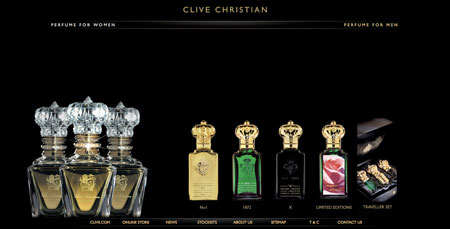
BERLIN – About ten years ago, the luxury industry slowly began to adapt itself to a popular phenomenon known as the Internet.
BERLIN – About ten years ago, the luxury industry slowly began to adapt itself to a popular phenomenon known as the Internet. Even in the case of such progressive brands as Prada, the ambitious plan for a high-tech website met with multi-year delays. Many public relations representatives of major conglomerates didn’t seem to believe in using email as an everyday communications tool. And, premium e-commerce was restricted to a few clunky, but nevertheless commendable, sites of those early adopters such as LVMH’s eluxury.com and bluefly.com. Luxury retail was still seen as the exclusive domain of three-dimensional stores, and there was little need to rethink this priority – after all, sales were stellar and brands were expanding like never before, thanks to a global economic boom with seemingly no end in sight.
Flashing forward to 2009: the world economy is on life support and even emerging markets like China and India, the industry’s favoured children, are stumbling. Yet, thanks to the efforts of a few prescient entrepreneurs, the luxury industry has finally begun to make a major online effort. In fact, innovative e-commerce concepts have become luxury’s best bet for surviving the current hostile landscape, and sceptical CEO’s of premium brands need to start taking their cues from these upstarts or else they risk being rendered obsolete.
The trailblazers in the e-commerce sector are companies such as LVMH’s eLuxury, Net-a-Porter and Yoox, which all went live around 2000. eLuxury was the most limited of the three in its innovation, and despite impressive growth, it announced in January that it will soon discontinue its retail operations since many of the brands it carries now have their own e-commerce operations. The site will take on an informational role, transitioning into an identity as an online fashion magazine instead. As the first major e-commerce presence of a major luxury player, eLuxury paved the way for future forays by Gucci, Bergdorf Goodman, Saks Fifth Avenue and others. Herd mentality can prevail in the fashion business, and the fact that LVMH, perpetually ahead of the curve, placed its bets on online retail, even in a limited form, facilitated the decision for other brands to endorse it.
Yoox and Net-a-Porter were different beasts, creating unique retail identities: on one hand, Yoox is a massive discount store akin to an ongoing online Barneys’ end-of-season warehouse sale, whereas Net-a-Porter has developed into a curated e-boutique with a strong narrative thread and built-in editorial content that plays a supporting role to sales.
With these pioneering upstarts in place, the industry has come to accept grudgingly the Internet as an evolving aspect of their business model that is ever more important. But, the current crisis has precipitated turning this fact into a reality that can no longer be placed on the back burner.
A recent WSJ article highlighted just how grim things are looking when it quoted an estimate from AlixPartners LLP, a Michigan-based turnaround consulting firm, stating that “25.8% of 182 large retailers it tracks are at significant risk of filing for bankruptcy or facing financial distress in 2009 or 2010.” And, lest luxury retailers come to the conclusion that somehow this only impacts mass-market retailers, AlixPartners CEO, Fred Crawford, pointed out that “there are companies in virtually every retail sector in distress, whether it’s a jeweler or a high-end luxury store.”
E-commerce, however, remains surprisingly attractive to consumers. Ease of access, a lack of lines, and better bargains conspire to corrupt even the most scrupulous shopper – the lure of being able to sit at home in your pyjamas, press a few buttons and have a stylishly packaged Prada bag hand-delivered to your door the next day is difficult to resist.
According to Victoria Bracewell Lewis, a senior analyst at Forrester Research, although business has slowed, “online retail is still growing in the double-digits, including luxury and premium products and services, ranging from the low-teens to the high 20% range, depending upon the market and product category.” Rising online star Gilt.com reports that they have seen no impact on sales: “our revenue for the second half of 2008 was almost four times greater than [for the] first half, and December’s revenue was 35% over plan.” Yoox posted year-on-year growth of 46% from 2007 to 2008.
The online luxury retail model also has a greater arsenal of relevant tools at its disposal with which to attract consumer attention. The virtual ‘private sale’, as embodied by Gilt Groupe and Vente Privée, has a similar allure to a sample sale – and as anyone who has ever attended one of those can tell you, nothing gets consumers more excited than the prospect of competing in a high-end retail clearinghouse. Other sites, such as 20ltd.com, offer limited-edition merchandise, allowing customers to feel like initiates of a luxury fraternity into which only a few, well-informed people are invited. And on the most basic of levels, sites like Net-a-Porter take pains to ensure that the logistics of online retail remain consumer-friendly to a fault, with shipping and return policies that embolden, rather than alienate, shoppers.
Gilt Groupe’s private sales

The fact is, e-commerce is too inviting to ignore. As Susan Lyne, Gilt Groupe’s CEO, comments, “Luxury goods retailers tend to be located in major cities or high-end resorts, so they serve only a slice of customers with the means and interest in luxury goods. Add to that the fact that most of us are time constrained — it’s a big deal to find the three or four hours it takes to get from home or work to a store, find the brand you are looking for, get the attention of a salesperson, and complete the transaction. E-commerce brings shopping to you, and that’s a huge advantage. We put a lot of effort into making it incredibly simple, convenient, and fast to shop Gilt Groupe, and it’s one of the reasons our customer base has been growing so fast.”
Thanks to Internet technology, this new breed of Internet retail sites also have the ability to cater more specifically to the individual tastes of each visitor through customer profiling. Yoox CEO, Federico Marchetti, values this information stream so highly that the company has an internet team dedicated exclusively to what he calls “Business Intelligence.”
He explains, “We track every season since 2000, which allows us to define our customers geographically, each customer in Tokyo, Paris or Sicily. We also identify our top 10,000 customers, who we call ‘superstars.’ We try to serve them better every season by analyzing the patterns of what they view and purchase, return patterns – a huge amount of variables, more than you can imagine.”
Fashion isn’t the only luxury segment with an e-commerce presence of course, but when it comes to other product categories, most sites aren’t up to par insofar as pushing the envelope of design and service delivery. Some of the more noteworthy sites revolve around secondary and related aspects of the fashion industry such as beauty, perfume and vintage clothing.
Sephora, with its reasonably-priced, progressive product selection, occupies a space between premium luxury and mass market with a most sophisticated and well-sized site. Clive Christian, a British perfumer who bills himself as the creator of the ‘world’s most expensive perfume’ is the individual retailer at the top of the heap, followed closely by other niche brands such as Frederic Malle and Ormonde Jayne. This might seem counter-intuitive, since fragrance purchases are driven by such a sensory experience, but it’s likely that the clientele are already loyal fans, making use of the Internet to access products that might not be readily stocked locally.
Clive Christian website

Another category that shows strong promise is travel, with such auction sites as luxurylink.com that allow customers to bid on substantially discounted vacation packages. This approach to travel planning demonstrates the same out-of-the-box thinking that has earned Yoox, Gilt Groupe, and other similar sites such strong fan bases. In contrast, the Orient-Express website, which allows visitors to book hotel stays, train trips and cruises, follows a much more traditional consumer model, albeit in a sleekly-designed site.
Other product categories, such as home furnishings, watches and wine also have some presence online, though they lag far behind in terms of aesthetics and service. For the most part, they aren’t targeted towards a luxury customer, and their luxury merchandise represents only a small percentage of their offerings. The unimaginatively named Wine.com offers a comprehensive selection of both fine vintages and more affordable bottles, but its core business is driven by the latter. The Watchery.com sells timepieces that retail in the thousands of dollars but the site itself looks like a bargain retailer holdover from the 90’s. And furniture brands such as Crate & Barrel and Ethan Allen have online stores, but they hardly qualify as purveyors of luxury.
The one site that seems to unify lifestyle goods under a chic umbrella is Vivre.com, the brainchild of another early-adopter Eva Jeanbart Lorenzotti, which sells fashion and accessories, in addition to a broad range of furniture, art, and quirky objects. Interestingly, Vivre recently made the transition from virtual to three-dimensional store, opening in the Cove, a luxury boutique hotel offshoot of the Atlantis mega-resort in the Bahamas – among the first in what may become a new retail phenomenon.
Regardless of the particular category, Bracewell Lewis makes a compelling case for e-commerce, and her analysis has a healthy cautionary element as well. She notes, “There remains a tendency [in] much of the traditional luxury sector to discount or outright ignore prevailing consumer trends. [They] are holding fast to increasingly out-dated modes of branding, merchandising, customer interaction and service. Independent retailers like Yoox, Net-a-Porter, Cooldiamonds.com, Bluefly, [etc.] have proven to be much more adept at understanding how the very same luxury shopper will have different expectations, needs, and wants of the shopping experience for online and offline. The pure-plays or independent retailers, with some exceptions, have proven much more adaptable and flexible. As such, many of these retailers have fared quite well, despite the recession.”
The economic crisis shows no signs of waning, and by this summer we will begin to see more serious casualties within the hallowed halls of the luxury establishment. Designer ranks will be winnowed, which may not be an entirely bad thing, with a glut of brands having flooded the marketplace in the last decade. The current Darwinian conditions will see the survival of not just the chicest, but the smartest as well.
E-commerce shows promise of continued innovation, and with its reduced overhead and streamlined operational process, it will become increasingly attractive to conglomerates and consumers alike. We will not, of course, see the disappearance of stand-alone stores, but by the time the world economy recovers, we might expect to see a greater percentage of market share being driven by online transactions.
The most forward-thinking companies will adopt marketing strategies that treat e-commerce as a first among equals, investing in software platforms as well as in targeted, virtual customer service to drive sales. The luxury world can no longer afford to consider e-commerce as the poor cousin of brick-and-mortar boutiques, and the CEOs yet to convert to the digital age should enrol in an E-Commerce 101 class stat. Otherwise, they are in danger of discovering that insistence on the primacy of three-dimensional retail is painfully last season.
Sameer Reddy, Editor-at-Large

